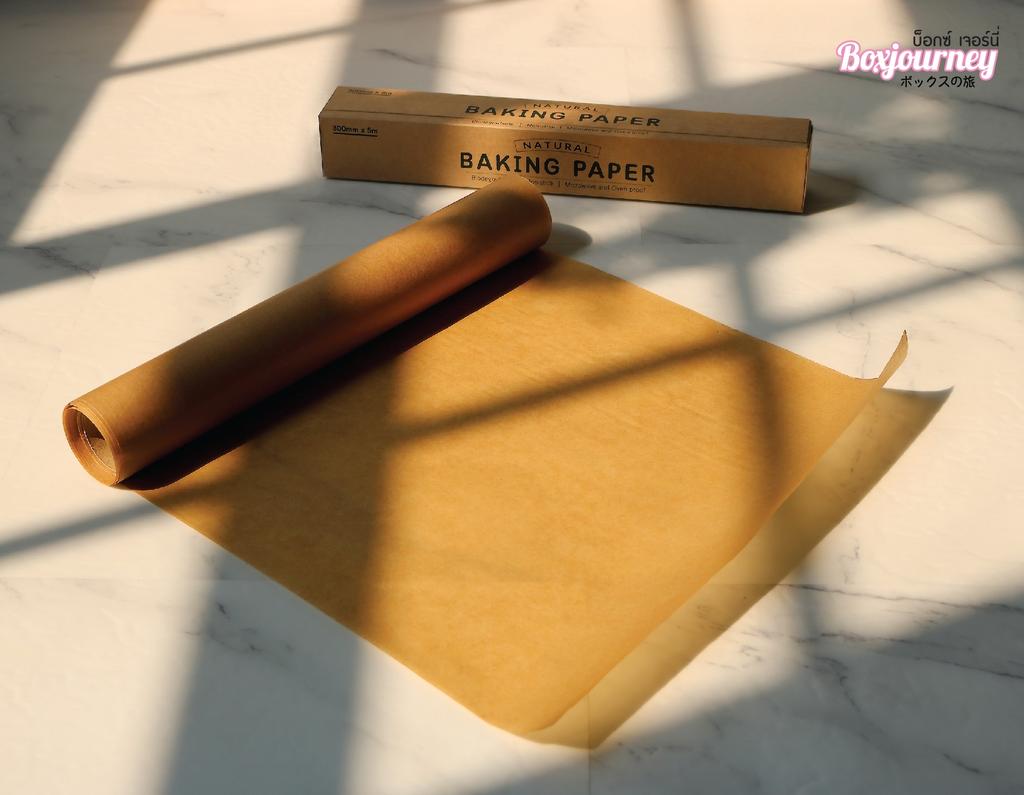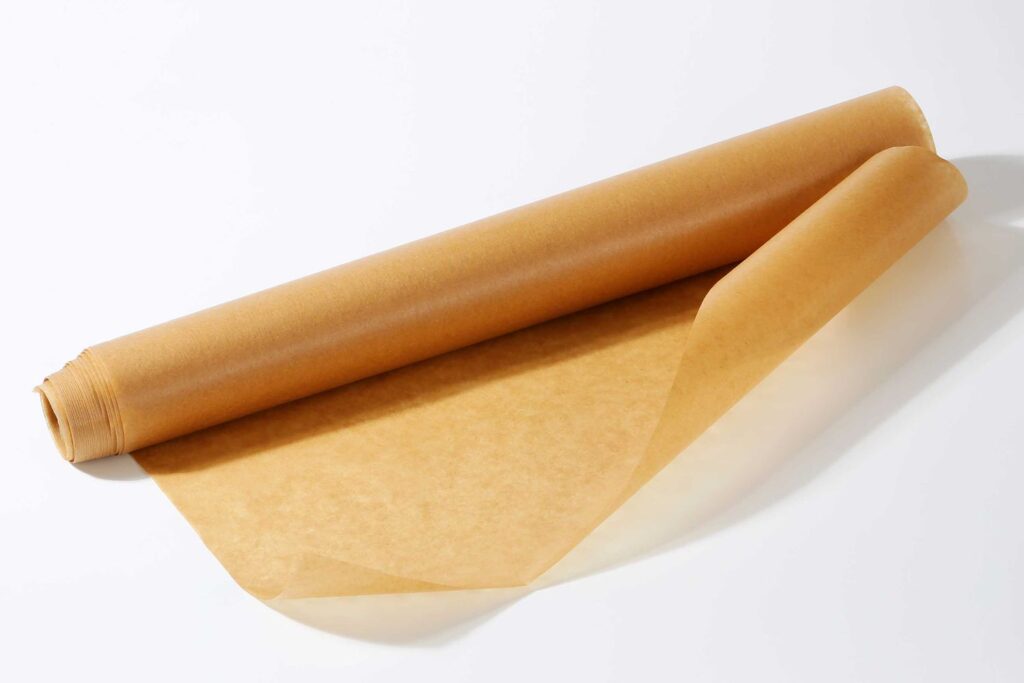Greaseproof paper and wax paper are distinct materials often used in cooking and food preparation. Greaseproof paper, also called parchment or baking paper, is treated to resist grease and moisture, making it ideal for lining pans during baking. It’s heat-resistant and facilitates easy removal of baked goods. Conversely, wax paper is coated with a thin layer of wax, usually paraffin wax, providing moisture resistance but lacking heat resistance. It’s suitable for short-term food storage and wrapping, yet not recommended for oven use due to its tendency to melt or ignite at high temperatures.
Both papers serve as barriers against moisture, grease, and sticking, but their different compositions make greaseproof paper more suitable for baking and heat-related tasks, while wax paper is better for cold storage and non-heat applications.
Greaseproof Paper! What Are Its Uses?

Greaseproof paper, also known as parchment or baking paper, is a specialty paper designed with a non-stick, grease-resistant coating.
It is typically made from highly dense paper fibers that are treated with a silicone coating, which gives it its non-stick properties.
This paper is usually white or translucent and has a smooth surface texture, making it ideal for various culinary applications.
Common Uses in Cooking and Baking
Greaseproof paper is widely used to line baking pans and trays, preventing food items from sticking and making cleanup easier.
It is suitable for baking cookies, cakes, bread, and other baked goods, providing a non-stick surface without the need for additional grease or oil.
Greaseproof paper is also used in steaming food or creating parchment packets for cooking fish, vegetables, or meats in the oven.
Heat Resistance and Suitability for Oven Use
Greaseproof paper is heat-resistant, capable of withstanding oven temperatures typically up to around 450°F (230°C) without burning or melting.
Its heat resistance makes it an excellent choice for oven use, allowing it to be safely used in baking, roasting, and other cooking methods that involve heat.
The paper’s non-stick properties and ability to withstand heat without transferring flavors or chemicals to food make it a versatile and indispensable tool in the kitchen for both professional chefs and home cooks.
Wax Paper! How to Use It?
Wax paper is a type of paper that has been coated with a thin layer of wax, often paraffin wax, on both sides.
The wax coating provides the paper with moisture resistance, making it suitable for wrapping or storing food items that may release moisture.
It typically has a slightly translucent appearance and a smooth, shiny surface due to the wax coating.
Applications and Recommended Uses
Wax paper is commonly used for wrapping sandwiches, cheese, baked goods, or greasy food items to prevent moisture loss and maintain freshness.
It can be used as a protective barrier when working with ingredients that might stick, like when rolling out dough or coating surfaces during food preparation.
Similar to parchment paper, wax paper can act as a non-stick surface for certain tasks like tempering chocolate or separating food items during storage.
Lack of Heat Resistance and Limitations in Cooking
One of the primary limitations of wax paper is its lack of heat resistance. The wax coating can melt or transfer onto food when exposed to high temperatures, making it unsuitable for use in ovens, grills, or other cooking methods involving heat.
Direct contact with heat sources can cause the wax to melt, potentially leading to fires or altering the taste and texture of food.
Due to its inability to withstand heat, it should not be used in baking, roasting, or any cooking methods that involve placing the paper in the oven or close to direct heat sources.
What Are The Key Differences Between Greaseproof Paper and Wax Paper?
These differences in composition, resistance to heat and moisture, as well as their specific purposes and recommended applications, is crucial for choosing the right paper for various cooking and food preparation needs.
Composition and Coatings
Greaseproof Paper
Greaseproof paper is typically made from dense paper fibers that are treated with a silicone coating.
The coating used in greaseproof paper is often silicone, which provides a non-stick surface and grease resistance without the need for additional oils or sprays.
Wax Paper
Wax paper, as the name suggests, is paper that has been coated with a thin layer of wax, typically paraffin wax, on both sides.
The wax coating gives the paper its moisture resistance but lacks the non-stick properties of greaseproof paper.
Resistance to Heat and Moisture
Greaseproof Paper
Greaseproof paper is heat-resistant and can withstand oven temperatures typically up to around 450°F (230°C) without melting or burning.
It is also resistant to grease and moisture, making it suitable for use in baking and cooking applications where these properties are essential.
Wax Paper
Wax paper is not heat-resistant and cannot withstand high temperatures without melting or transferring its wax coating onto food.
While it offers good moisture resistance, it is not suitable for use in ovens or other cooking methods involving heat due to its low heat resistance.
Specific Purposes and Recommended Applications

Greaseproof Paper
Recommended for baking and cooking tasks that involve exposure to heat, such as lining baking pans, roasting, or creating parchment packets for oven cooking.
Ideal for use as a non-stick surface and to prevent food from sticking during baking.
Wax Paper
Recommended for non-heat applications such as wrapping sandwiches, covering food for short-term storage in the refrigerator, or as a non-stick surface for certain tasks like tempering chocolate.
Not suitable for oven use due to its low heat resistance and the risk of melting or transferring the wax coating onto food.
FAQ’s
What is equivalent to greaseproof paper?
Parchment paper or baking paper is equivalent to greaseproof paper.
What is another name for greaseproof paper?
Another name for greaseproof paper is parchment paper or baking paper.
What can I use if I don’t have greaseproof?
If you don’t have greaseproof paper, alternatives like parchment paper or silicone baking mats can be used.
Why is it called greaseproof paper?
Greaseproof paper earns its name from being treated to resist grease and oil, preventing saturation or soaking.
Is greaseproof paper baking paper?
Yes, greaseproof paper is often referred to as baking paper and is used similarly in various culinary applications.
What is greaseproof paper made of?
Greaseproof paper is typically made from dense paper fibers treated with a silicone coating to provide resistance to grease and oil.
Final Words
In conclusion, understanding the contrast between greaseproof paper and wax paper is crucial. Greaseproof paper, also known as baking or parchment paper, is great for baking cookies, lining pans, and handling high temperatures in the oven. On the other hand, wax paper is handy for wrapping sandwiches, storing food, and preventing sticking during tasks that don’t involve heat.
Remember, greaseproof paper is heat-resistant and ideal for baking, while wax paper isn’t meant for heat and might melt or transfer its wax coating. Knowing their unique properties helps choose the right paper for specific kitchen needs, making cooking and storing food a breeze.

